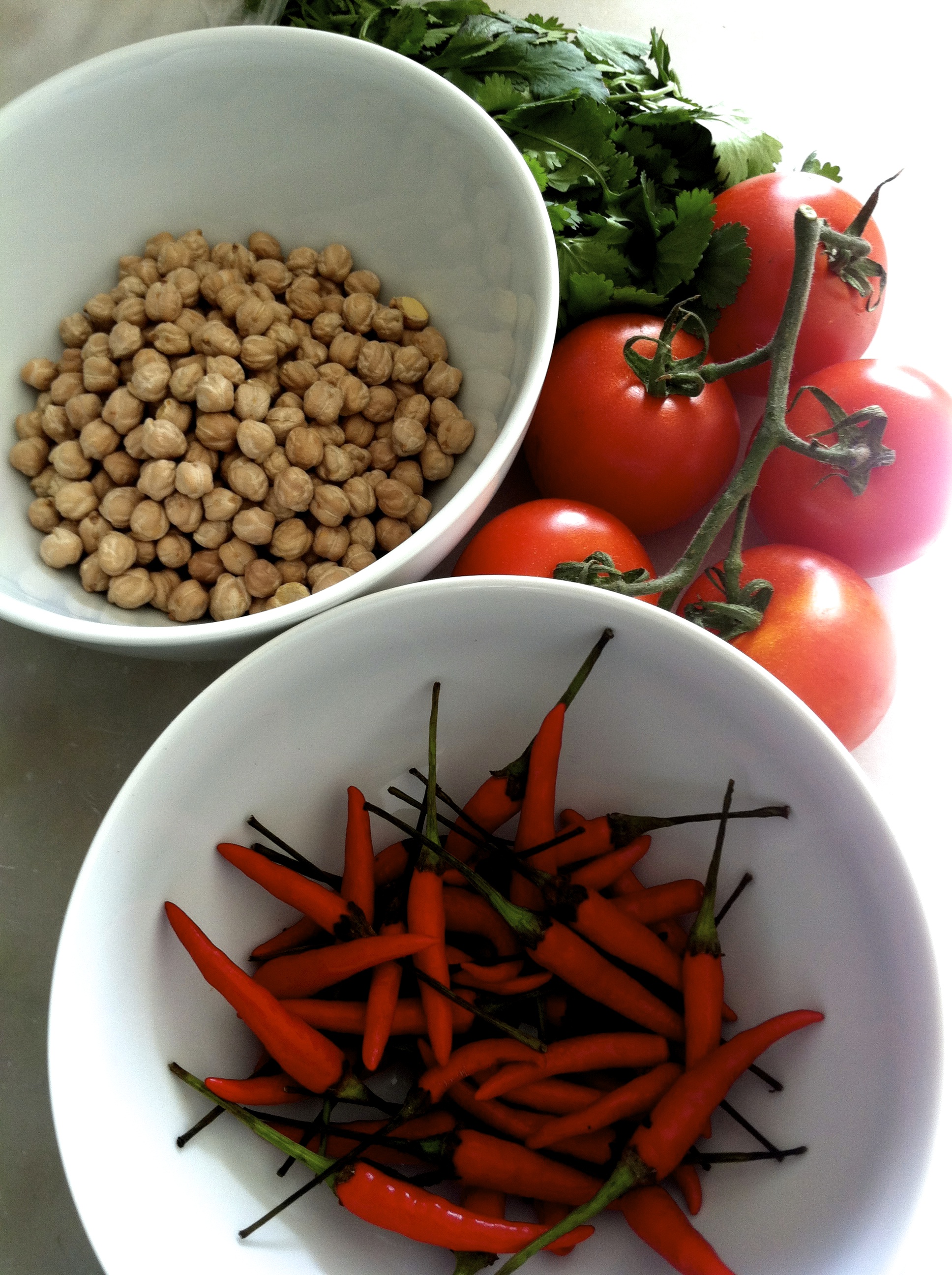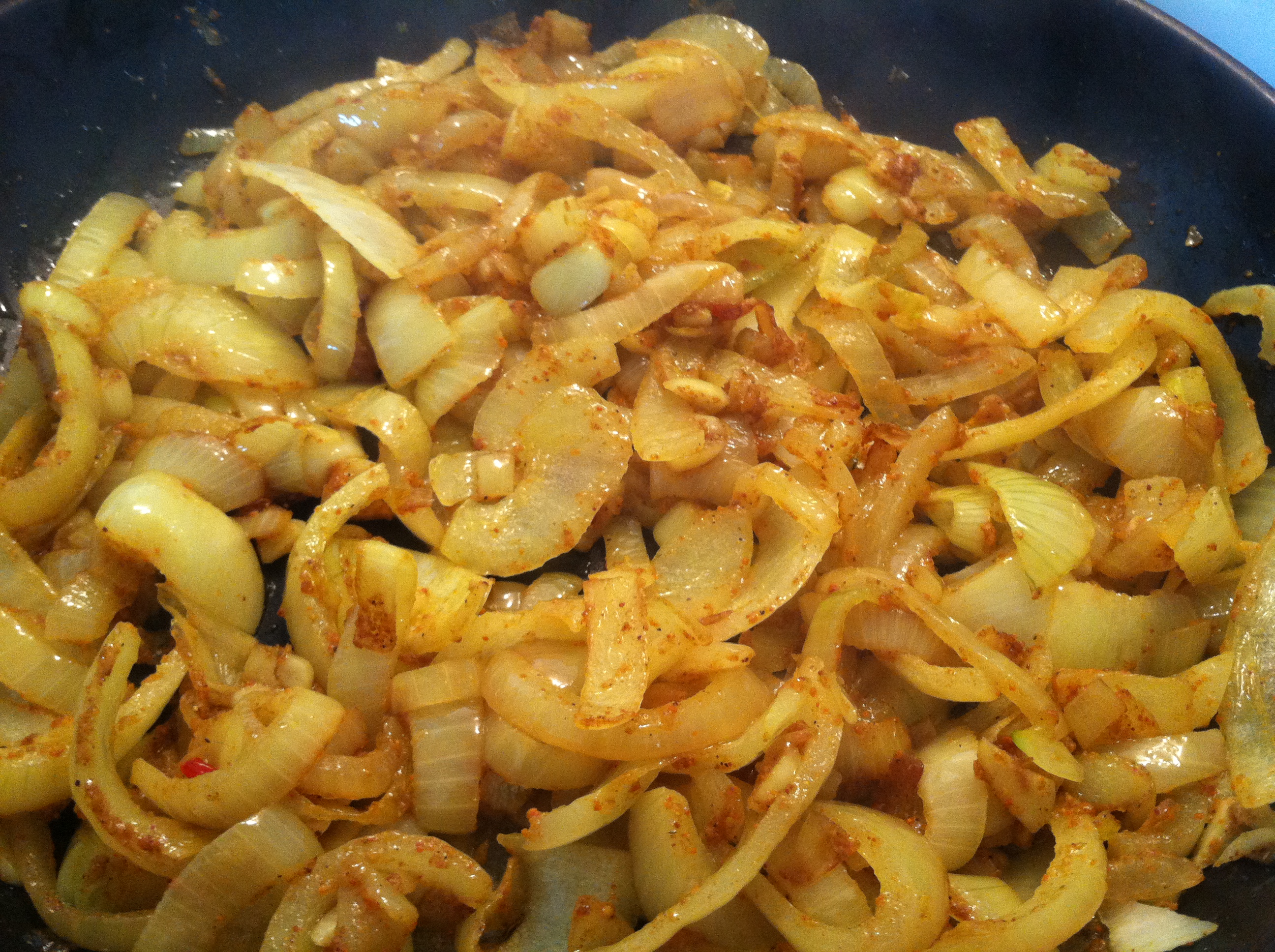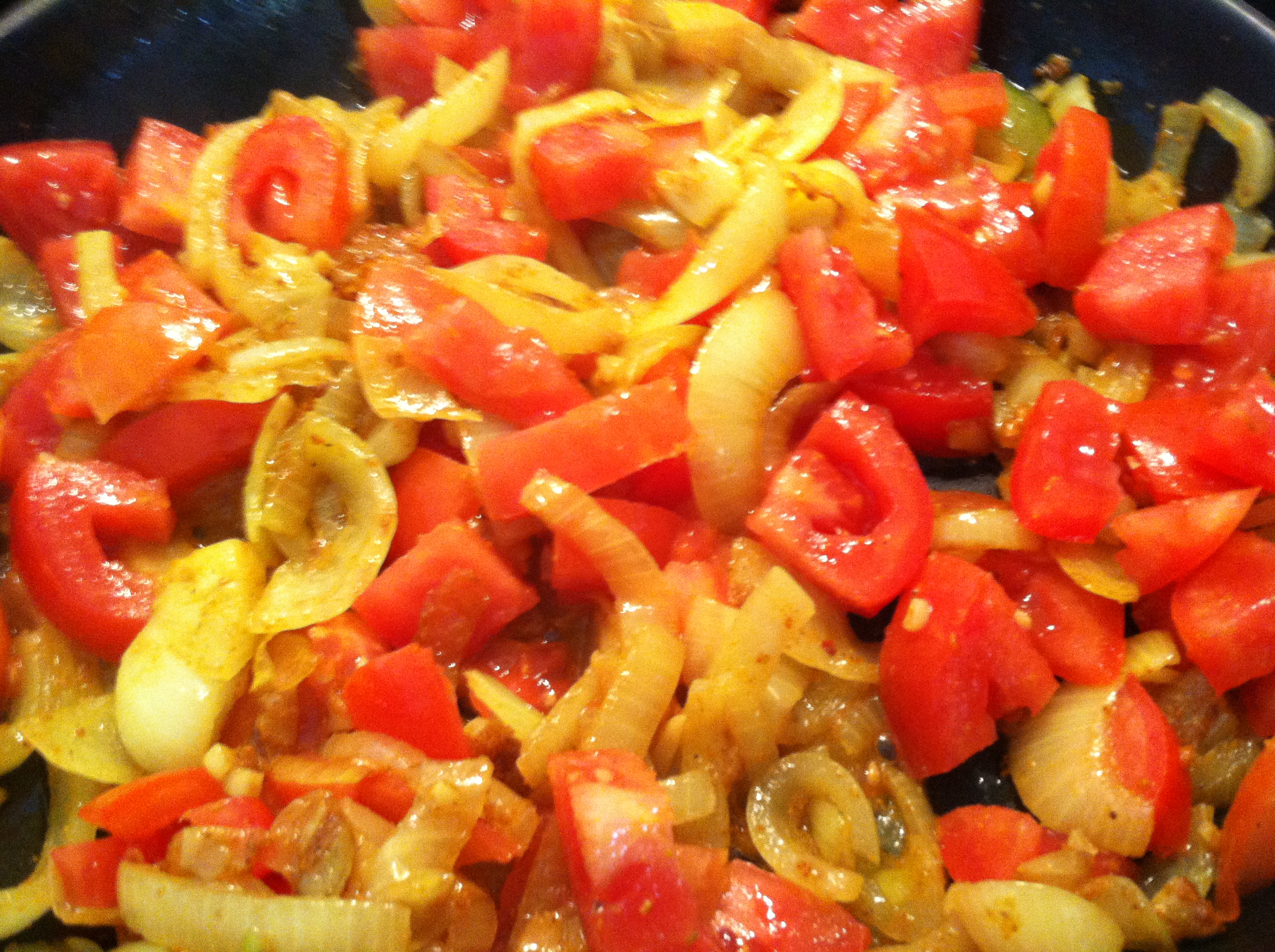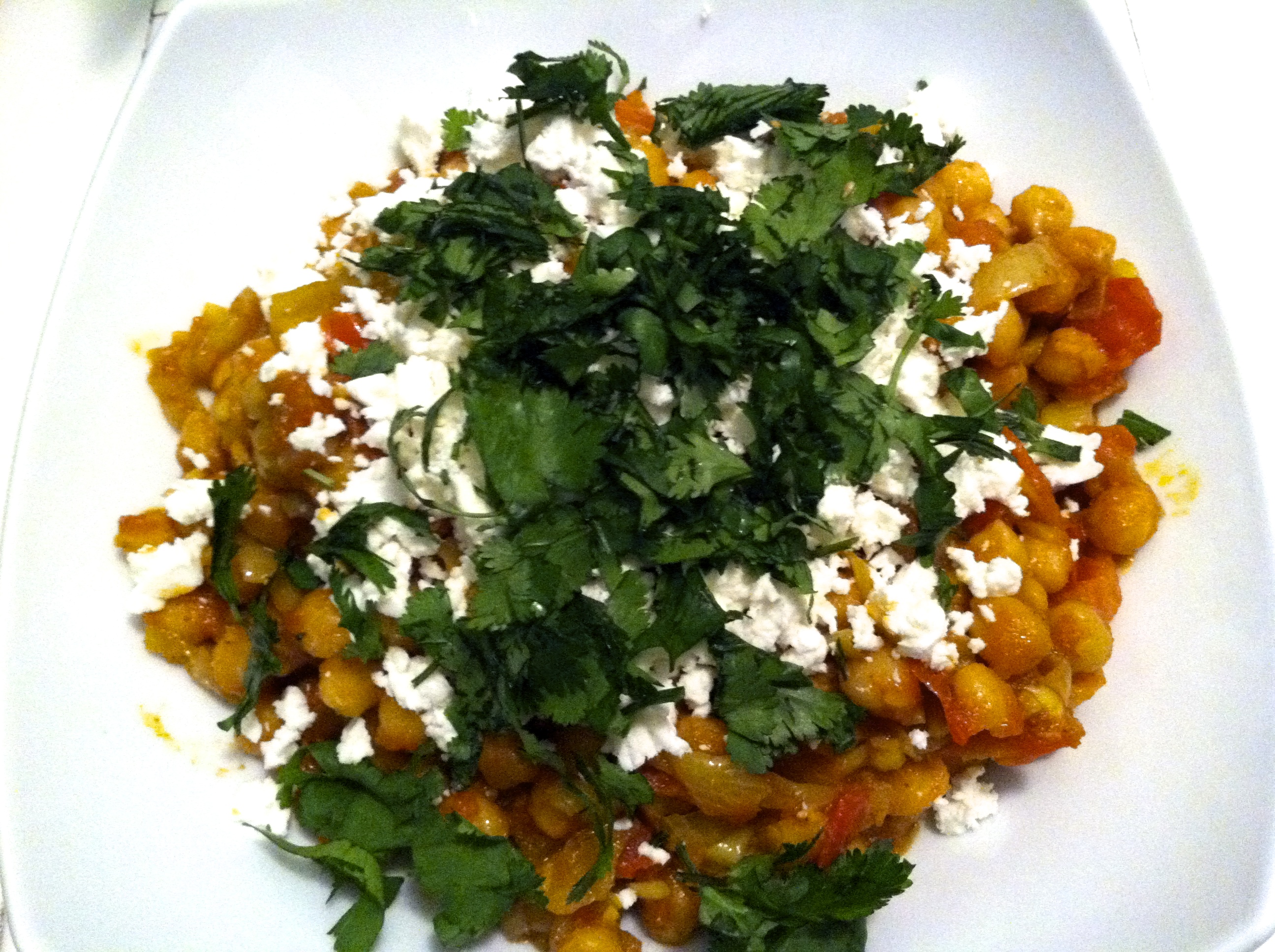
We are loving Portugal. It is filled with nice people, beautiful landscapes, and delicious food. The food is fresh, flavorful, and healthful (just like my Portuguese Fish Stew). We took a break from our Portuguese food adventures the other night to make dinner in our apartment. There are only so many meals I can eat out before I’m ready for something homemade. Most of the apartments we’re staying in have a very limited selection of spices. I decided I would allow myself to buy one spice at the market and carry it with me from place to place — of course I chose curry! Curry is such an underrated spice in my opinion. Too many Americans hear the word curry and imagine something way too spicy that will wreak havoc on the digestive system. Instead it is just the opposite.
Curry is actually a blend of spices. Typically it includes cumin, turmeric, fenugreek, coriander, and red pepper. It is usually not very hot at all — it gets the heat when people add additional pepper to recipes with curry. The spices in curry powder also have potent medicinal benefits – lots of anti-inflammatory actions, immune stimulants, and antioxidants. It is a fantastic spice blend to add to the diet and I’ve found that it tastes good with just about everything!
I used chickpeas (also called garbanzo beans) for this recipe. Dried chickpeas are great to travel with and can be re-hydrated relatively quickly when I’m ready to cook with them. Measure out roughly two cups of chickpeas into a large pot and cover with boiling water. Let them sit in the water for an hour or two, then rinse them and cover again with fresh boiling water. You should start to see them plumping up after the first soak. Change the soaking water again after another hour or two, but this time place them on the stove at a low simmer (I recommend adding a dash of salt to the cooking water). Simmer until the chickpeas as cooked through and no longer crunchy when you taste one (about an hour). You can also substitute canned chickpeas at this stage if you prefer.

The base for this recipe is curried onions (which I also discuss in my Last Meal in Boston post). Add chopped onions, olive oil, and curry powder to a pan and cook slowly over medium heat until they have become translucent and are fully infused with the curry taste. I typically use one teaspoon of curry powder for three medium onions, but you can adjust based on what appeals to your taste. I often enjoy these onions plain as a side dish, or mixed into beans, grains, or salads.

For this recipe, add rough chopped tomatoes to the onions after about ten minutes of cooking the onions on their own. Three large tomatoes or five small tomatoes should be plenty. You can also add extra hot pepper if you want your dish to be spicy. I found adorable, tiny red peppers at the market. They turned out to be REALLY hot, so I only ended up using about half a pepper. A quarter teaspoon of cayenne powder would also work well.

Cook the onions and tomatoes together for five minutes and then add the drained, cooked chickpeas. Mix until everything is well combined and cook on low for 15 minutes. Taste periodically to see if you need more curry, salt, or pepper.

Serve with fresh chopped cilantro and crumbled feta cheese. The saltiness of the cheese is the perfect compliment to the spice in the dish (and I love anything with feta). For those that don’t eat dairy, this would also be good with just cilantro and maybe an extra dash of salt.

Chickpeas are particularly high in fiber (as well as offering protein, iron, and manganese). Dietary fiber is found naturally in all plants. The fiber is the part of the plant that is undigested in our stomach and instead passes through our full digestive track. Fiber is categorized as soluble and insoluble, but both have important health benefits.
Soluble fiber attracts water and forms a gel-like substance, which slows down digestion and can make you feel full longer. The gel also attracts bile and pulls it out of the body, which in turn interferes with the absorption of LDL “bad” cholesterol. Research has demonstrated chickpeas ability to reduce LDL cholesterol levels because of this soluble fiber.
Insoluble fiber is particularly beneficial to the digestive track because it has a slightly laxative effect and add bulk to the diet, which can help prevent constipation. These fibers don’t break down in the body, so they clean out the intestines as they pass through the body
Fiber or not, this meal was excellent and definitely something I’ll make again. We had the leftovers the following day and they were equally good!
Leave a Reply